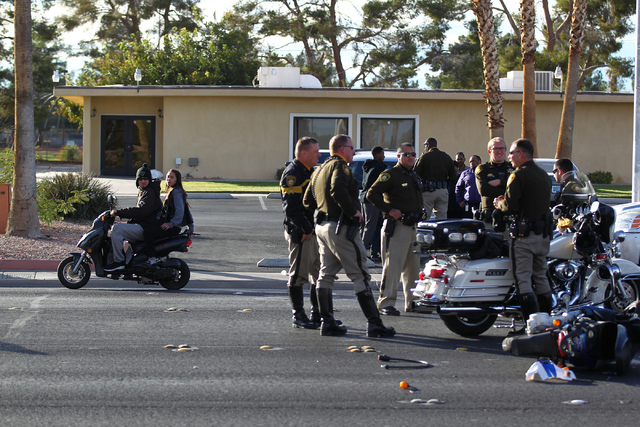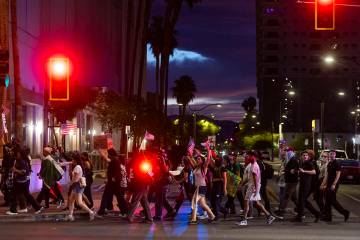Some mopeds must abide by laws governing motorcycles
It’s become common to find mopeds sharing the same lanes as cars, despite two-wheeled vehicles’ inability to achieve speed limits designed for their four-wheeled counterparts.
“At first, it was just a money thing,” said southwest resident and moped driver James Elliot. “It’s a much cheaper vehicle to buy, and I can get places faster than I could on the bus. Now it’s just the way I like to go places. It’s a fun ride.”
A moped, considered a motor-driven scooter by the Nevada Department of Motor Vehicles, is clearly defined in Nevada. It must be less than 2 horsepower, have an engine 50 cubic centimeters or smaller and be incapable of driving more than 30 mph on a flat road. If a vehicle meets those specifications, it does not need to be registered or insured, but a regular Class C or higher driver’s license is required to drive it on a public street.
“There’s a lot of confusion about this,” said Miguel Garcia, a public information officer for the Metropolitan Police Department. “It’s really simple. If it has a motor, you need a license for it. You need a Class C license or a Class M license, depending on the vehicle, and there are age requirements for those licenses.”
Children driving motorized two-wheel vehicles on public streets is illegal.
“If you’re on private property, that’s a different matter, but we still always recommend that you wear the right clothes,” Garcia said. “If someone, particularly a young person, is on a motorized vehicle, why not wear the helmet, the safety goggles and the rest of that to protect themselves?”
Two-wheeled vehicles that exceed the moped criteria are considered motorcycles and are subject to all the rules and rights of a motorcycle. Insurance, helmets and vehicle registration are required, including a $6 fee to help fund the Nevada Rider Motorcycle Safety Program, which was created to ensure that motorcycle training is available to all residents at a reasonable cost.
Most mopeds are subject to all the regulations that apply to motorcycles and must have headlights, turn signals, mirrors and brake lights, or they can’t be on a public road.
“The same goes for dirt bikes and other vehicles without the proper safety equipment,” Garcia said. “We get people who say they’re just testing them out, but without that equipment, you can’t take them on the road.”
Garcia added that mopeds are forbidden from using bicycle lanes.
“Those are designated for bicycles only,” he said. “They (mopeds) drive slower than just about anything else on the road. There are some skateboards that are faster. They should be in the far right of the motor vehicle traffic lane, and they should follow the rules of the road, just like any other motor vehicle.”
Motorists should give mopeds considerable space, moving to the next lane if possible.
Mopeds with two passengers are legal only if the vehicle was designed for that. Offenders can be cited by police.
People who drive mopeds legally classified as motorcycles aren’t required to wear helmets under state law, but Metro recommends wearing them and any other equipment, such as reflective clothing, that can make a rider safer and more visible.
“If you’re going to be on the road, why not have the same safety you’d have on a motorcycle?” Garcia said. “Wear gloves, safety goggles and a helmet. Don’t wear sandals. Dress appropriately, so if you fall off, you’re not going to leave your skin on the asphalt.”
Contact East Valley View reporter F. Andrew Taylor at ataylor@viewnews.com or 702-380-4532.

















